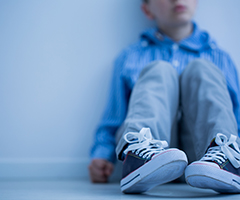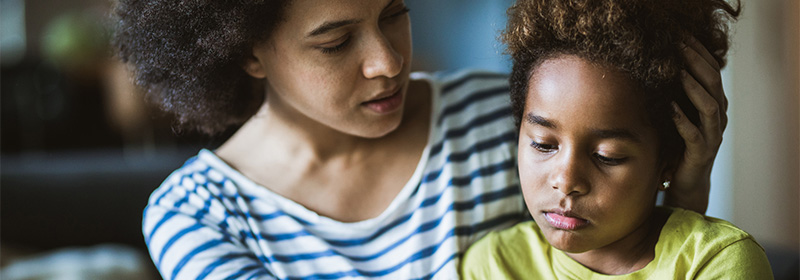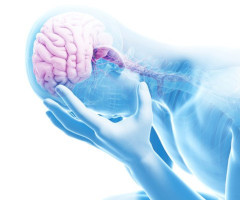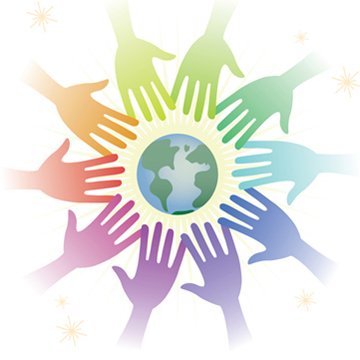Depression in Children and Adolescents: Understanding, Recognizing, and Treating a Complex Disorder

Depression is a mental health condition that affects people of all ages, including children and adolescents. Unlike the normal mood swings or occasional feelings of sadness that are part of growing up, depression is a more severe and persistent condition that can interfere with a young person’s ability to function normally. It affects their relationships with family and friends, school performance, and participation in activities like sports or hobbies. Recognizing depression in children and adolescents can be challenging because they are still developing emotionally and behaviorally. However, with the right approach, effective treatment is possible.
The Importance of Mental Health in Children and Adolescents
Mental health is an essential aspect of a child’s overall health and well-being. It encompasses emotional, psychological, and behavioral well-being, influencing how a child feels, thinks, and acts. Good mental health helps children and adolescents build positive relationships, cope with stress, and make healthy choices. When a child’s mental health is compromised by depression, it can have profound consequences on their development and daily life.

Recognizing the Symptoms of Depression in Children and Adolescents
Depression in children and adolescents may manifest differently than in adults. While adults often express a loss of pleasure or deep sadness, children and adolescents might act out in anger, experience physical symptoms like aches and pains, or show signs of irritability. Research suggests that depression can appear as early as age three, but symptoms can vary significantly depending on the child’s age, developmental stage, and other factors such as their current physical or mental health.
Common symptoms of depression in children and adolescents include:
- Persistent sadness for at least two weeks
- Loss of interest in activities, friends, and school
- Lack of energy and fatigue
- Difficulty maintaining relationships
- Changes in appetite (either increased or decreased)
- Difficulty concentrating
- Low self-esteem or feelings of worthlessness
- Inappropriate guilt
- Irritability, hostility, or aggression
- Suicidal thoughts or behavior
- Disrupted sleep patterns (either too much or too little sleep)
Additional symptoms in children may include crankiness, social withdrawal, substance use (especially in older children), vocal outbursts, or physical complaints like headaches and stomach aches that do not respond to medical treatment. It is essential to recognize that not every child will exhibit all these symptoms, and the severity can vary from one child to another.
Types of Depression in Children and Adolescents
Depression is more than just feeling sad; it is a complex mood disorder that can present in several forms:
- Major Depressive Disorder (MDD): This type of depression is characterized by a persistently low or irritable mood or a significant loss of interest in activities for at least two weeks. Additional symptoms may include changes in appetite, sleep disturbances, fatigue, feelings of guilt, difficulty concentrating, and suicidal thoughts.
- Persistent Depressive Disorder (PDD): Also known as dysthymia, PDD involves a continuous low or irritable mood lasting for at least one year in children and adolescents. Symptoms are generally less severe than those of MDD but more chronic, often leading to a lower overall quality of life.
- Premenstrual Dysphoric Disorder (PMDD): This type of depression affects adolescent girls who have begun menstruating. It involves severe mood swings, depression, and anxiety in the week leading up to menstruation, along with physical symptoms like cramps, fatigue, and body aches.
- Seasonal Affective Disorder (SAD): SAD is characterized by depressive episodes that occur at specific times of the year, typically during the darker winter months when there is less exposure to sunlight. Symptoms usually improve with the onset of spring and summer but can occur during other seasons as well.
Treatment Approaches for Depression in Children and Adolescents
While depression is a serious condition, it is also treatable. A multimodal approach, which combines various treatments tailored to the individual’s needs, is often the most effective. Treatment plans for children and adolescents are generally based on psychotherapy, psychosocial interventions, and, in some cases, medication. For those with mild to moderate depression, psychotherapy is usually the first line of treatment.
Psychotherapeutic Treatment Options
Psychotherapy, or “talk therapy,” involves discussing thoughts, feelings, and behaviors with a mental health professional. It is an effective treatment for many children and adolescents suffering from depression. Common forms of psychotherapy include:
- Cognitive Behavioral Therapy (CBT): CBT helps children identify and change negative thought patterns and behaviors. It teaches problem-solving skills and coping strategies to manage symptoms and improve overall mental health.
- Interpersonal Therapy (IPT): IPT focuses on improving relationships and communication skills. It can help children and adolescents navigate interpersonal conflicts and develop healthier ways to interact with others.
- Psychoeducation: This involves educating the child and their family about depression, the importance of good sleep, nutrition, and the benefits of regular exercise.
Pharmacological Treatment Options
Medications may be considered for severe depression or cases where psychotherapy alone is insufficient. While there is limited evidence to support the widespread use of antidepressants in children and adolescents, some medications have been approved by the U.S. Food and Drug Administration (FDA) for this age group:
- Fluoxetine (Prozac): An SSRI approved for children aged 8 and older.
- Escitalopram (Lexapro): An SSRI approved for children aged 12 and older.
These medications can be effective in treating depression, but they also come with potential side effects, such as headaches, nausea, weight gain, and, in rare cases, increased suicidal thoughts. Therefore, close monitoring by healthcare professionals is crucial when these medications are prescribed.

Complementary and Integrative Approaches
Complementary approaches, such as art therapy, massage therapy, music therapy, physical activity, and nutrition, can be effective adjuncts to conventional treatment. However, they should not replace standard medical treatment or psychotherapy. These approaches can help children and adolescents manage symptoms, improve mood, and develop better coping skills.
The Importance of Early Intervention and Support
Early intervention and support are critical when it comes to treating depression in children and adolescents. Without treatment, depression can severely impact a young person’s social, emotional, and academic development. Parents, caregivers, and educators should be vigilant for signs of depression and seek professional help when necessary. With the right support and treatment, most children and adolescents with depression can recover fully and lead fulfilling, happy lives.
Conclusion
Depression in children and adolescents is a complex but treatable condition. Understanding the symptoms and types of depression, along with the available treatment options, can help parents, caregivers, and professionals provide the support needed for recovery. A comprehensive, individualized approach that includes psychotherapy, medication (when appropriate), and complementary therapies offers the best chance for young people to overcome depression and thrive.
Continue Your Education
To learn more about the symptoms, forms, and treatment of depression, check out our Certificate in Depression or take the individual course on Depression in Children and Adolescents.
Depression Series
Post 2 of 4







